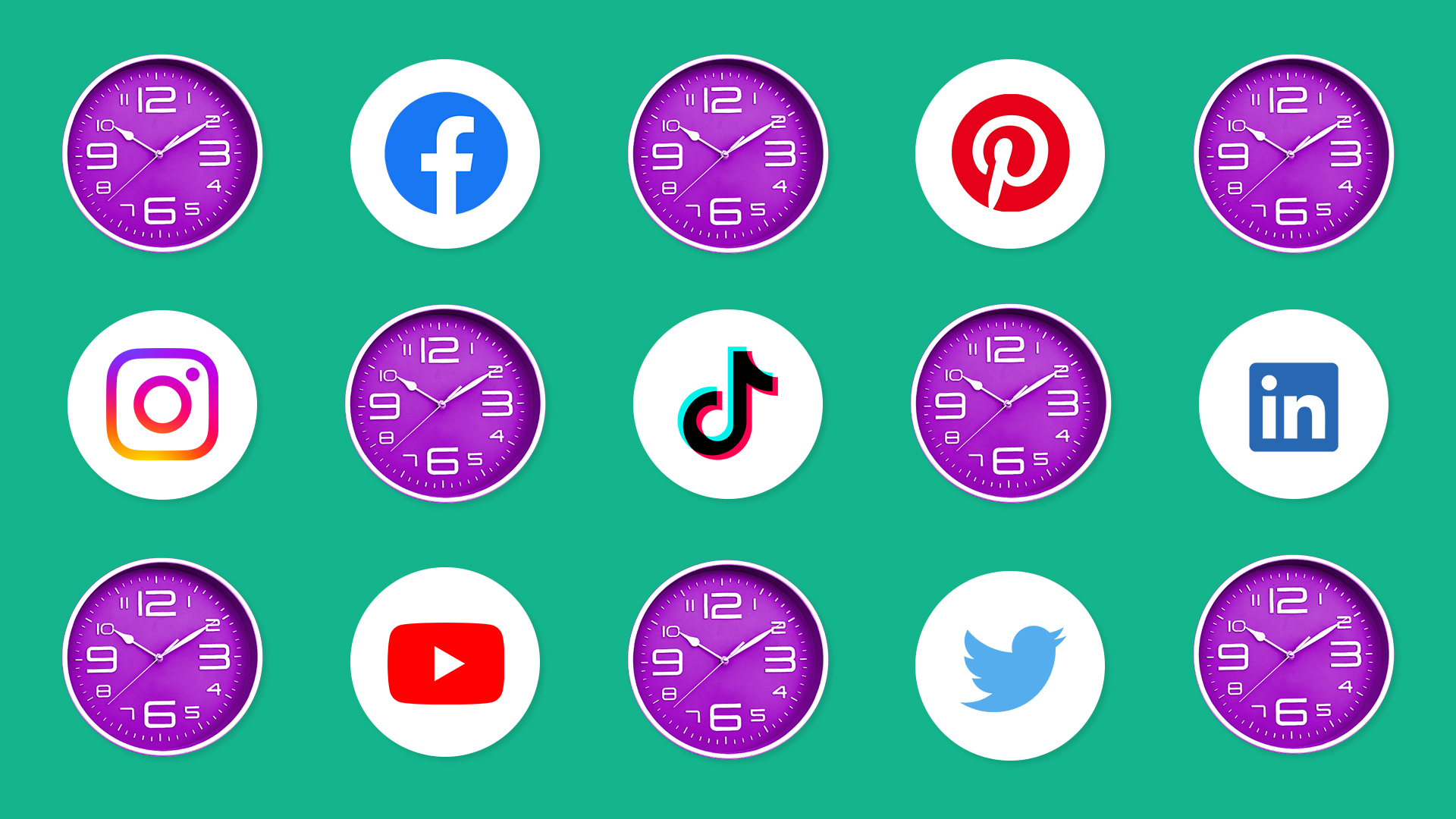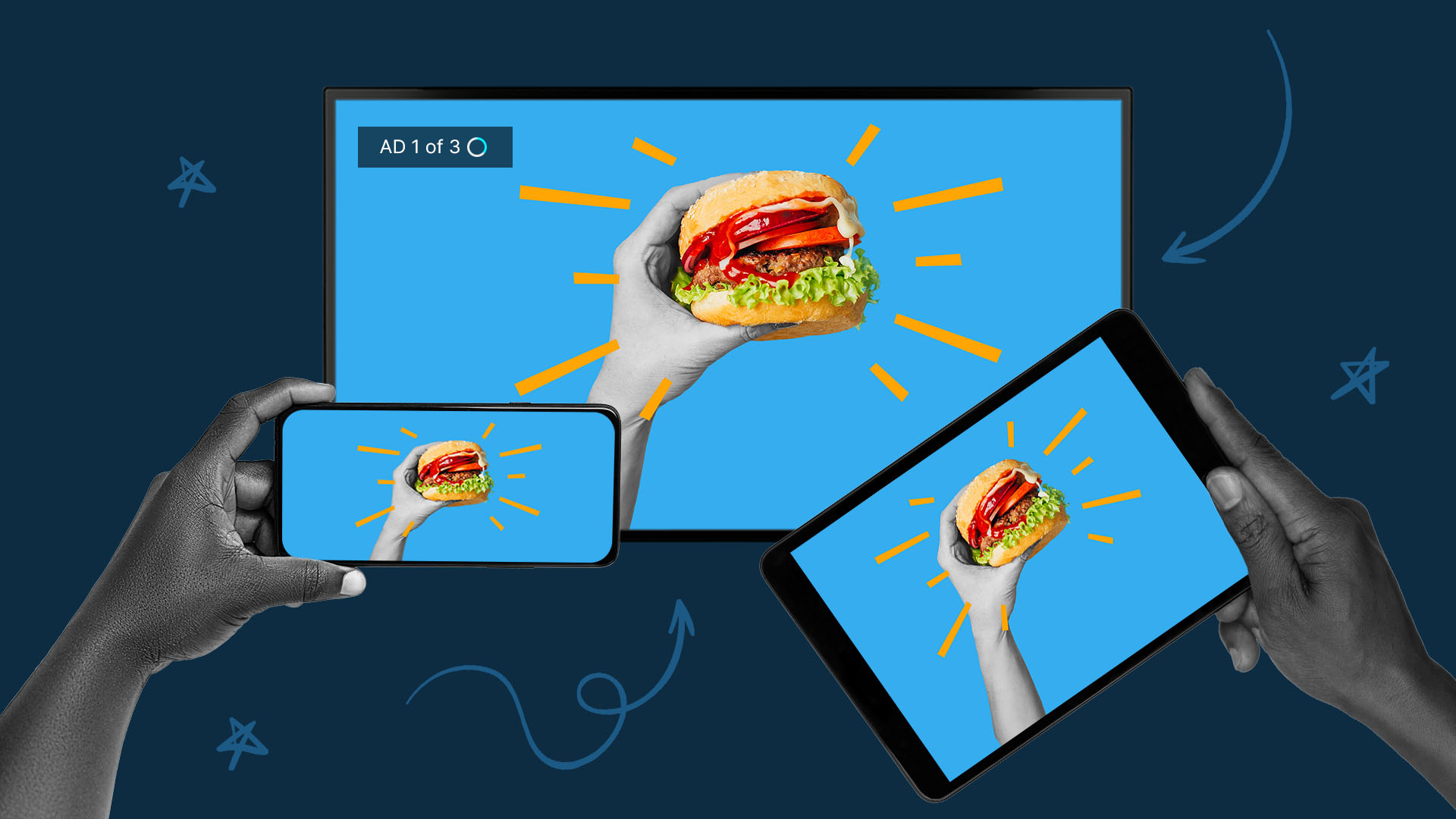When Is the Best Time To Post on Social Media in 2024?

It might feel like everyone is using their phone all the time, but with screens and content everywhere around us, it’s harder to reach your audience than you’d expect. That’s why what you post on social media matters, including when you share each piece of content.
Here, we’ll explore the best time to post on social media and how your brand can make the most of each platform’s algorithm.
Does Posting Time Matter on Social Media?
In short, yes. The factors social media algorithms use to determine what populates your various feeds do include the timing of your posts. It’s essential to be intentional with how you put your content out there — as important as respecting the rules of each platform’s ad specs and placements.
While Facebook, Instagram, Twitter, LinkedIn, and all the others have their own ways of using timing as part of their secret sauce algorithms, all of them have in common that they consider the immediate popularity of a post among your followers before disseminating it more widely. So, at the simplest level, if your followers aren’t online to engage, your post probably won’t be sent out to a wider audience and will stall out before it gets a chance to make a splash.
Understanding Social Media Algorithms
Social media algorithms are a series of formulae that take inputs (commonly called signals) and convert them into desired outcomes. In the world of social media, that means maximizing the number of users who are glued to these platforms for as long as possible (as well as drawing new users).
Each platform will emphasize different factors in keeping with its primary uses and audience. YouTube’s algorithm, for example, will consider broader trends as well as your viewing history, tastes, and reported interests. YouTube will also boost videos that have high degrees of engagement in the form of positive comments and emoji reactions. Simply, the more yoga videos you watch, the more yoga videos you’ll see pop up.
TikTok’s algorithm works similarly — but turbocharged. While YouTube wants to encourage you to browse and watch longer narrative content, it will keep video thumbnails on the side of your screen to encourage further exploration. On the other hand, TikTok will ruthlessly pare back anything you find uninteresting, whether by refusing to watch a video to the end, disliking, or commenting negatively, until your For You feed is a narrow band of videos relating in literal fashion to what you like. One quirk is that TikTok will also link videos with the same sound effects and music, so you may see a raft of similar dance videos even if your actual interest may have been some other element of the video.
Best Times To Post on Social Media
Every social media platform has its own use patterns. LinkedIn, for example, is a more professional platform that users tend to check during the day at work, so there’s no point posting in the middle of the night.
These are all just general principles based on large amounts of data. Still, if you’re wondering when to post on social media, it’s good to know the broad rules so you can make them work for you.
Generally speaking, mornings to early afternoons work best. Here are the specific breakdowns by day:
Monday
On Mondays, when everyone is back at work or school after the weekend, 10 a.m. to 12 p.m. is the best bracket to post, likely because people are antsy after losing their weekend freedom and are looking for some digital escape routes.
Tuesday
According to data, Tuesdays offer a broader band for posting, from 9 a.m. to 2 p.m. Connect with your audience as they find their footing for the week with uplifting, entertaining, and educational content.
Wednesday
Similarly, on Wednesdays, you have the best chances of reaching your audience between 9 a.m. and 1 p.m. If your audience is prone to the mid-week blues, make sure you include some inspiring content to help them move forward.
Thursday
The absolute best time to post on Thursday is around 11 a.m., but the three hours on either side of 11 also offer moderate engagement levels.
Friday
On Friday, 9 a.m. to 1 p.m. is the prime bracket for engagement. Make sure you connect with your audience before they head into the weekend since engagement usually dips on Saturday and Sunday.
Saturday
Even the weekends, surprisingly, follow a similar pattern. Saturday engagement is highest from 8 a.m. to 11 a.m., though it’s lighter overall than weekday engagement.
Sunday
On Sunday, 9 a.m. to 11 a.m. is the best bracket for optimal engagement.
Considerations for Timing Your Social Media Posts
There are, of course, a slew of caveats to these general rules.
Time Zones
Unless you’re a hyper-local brand, your audience likely lives across multiple time zones, which means that no matter when you post, you’re only going to hit some of them at any given time. You may want to target as much of your audience as possible. Find out where most of your engaged users live, and target them. If a post hits your core users, most social media algorithms will then spread it further.
Geographic Location
Similarly, your followers may be in different countries with slightly different local interests and needs. You may have to prioritize some over others or repurpose your content for different geographic locations.
User Behavior
Social media user behavior is unpredictable, especially when big changes happen. Keep an eye on your audience and see when they’re checking into the platform most often. These insights will allow you to plan your content schedule around their highest points of engagement.
Engagement Trends
Engagement trends, too, are prone to shifting. Instagram, for example, has changed its content to emphasize Instagram Reels, which are similar to TikTok videos. These changes can mean bigger strategic updates to the kind of content you put out, as well as how you time it.
Types of Content
Different types of content draw attention at different times of day. Much has changed since this 2018 Harvard Business Review study was conducted, but fascinatingly, it shows that, for example, it is “ideal to post content conveying high-arousal emotion (i.e., angry or worried) in the morning and ‘deep think’ content in the afternoon.”
Knowing what your audience will respond to at different times of day will help craft your strategy. And remember that you can plan ahead for the best time to post on social media and craft a winning plan for TikTok — or any social media platform.
How To Measure Success
How you measure success depends on your goals. But those goals need to be S.M.A.R.T. — specific, measurable, achievable, relevant, and time-bound. Your goal may be to increase followers, increase conversions, or increase engagement, for example. The important thing is to pick a goal or key performance indicator (KPI) meaningful to your business. Know how you can pursue and measure it through your social media video marketing strategy.
It’s Not a Perfect Science
Not only does every platform have its own rules, but so does every industry sector. You’re the brand, and you know your customer base and its needs better than anyone else. So the best time to post content on social media may be different for you than for others.
Use stats to guide you, but there will be a certain amount of trial and error involved. But it will be worth it, since well-timed and clever content will always give you a leg up in your video marketing strategy.
Use Social Media Analytics
Each platform has its own analytics page your brand can use to check on your posts’ effectiveness, reach, and engagement. By seeing accurate data on who’s engaging (or not) with your posts, you can create a path for your content that makes sense for you. Plus, this can help guide the best time to post on social media by examining when people are already engaging with your posts.
Test, Test, and Test Some More
Even with analytics, user behavior can be unpredictable. Platforms themselves go in and out of fashion, and social media trends are the definition of fickle. Some principles can be reliable — for example, comedy always breaks through the clutter — but what your audience decides is funny, useful, or relevant in their lives isn’t always predictable.
The solution is to test your concepts and spots until you know (via analytics, engagement, and the KPIs you settle on) what’s connecting with your audience. They may want something more relatable, like user-generated content (UGC). But you won’t know until you put it out there, so it’s time to start.
Making Social Media Videos at Scale
In order to connect with your audiences, you need a certain (read: large) quantity of videos. That constant creative and logistical effort can be beyond the ken of even a large company.
You need a partner who understands video production and social media, like QuickFrame. Here, we’re a team that loves the challenge of helping brands achieve their goals in the social media sphere. We make videos at scale, efficiently, and with data, so your videos are always ready to perform.
Contact us today to get started with social media video production.
When To Post on Social Media: Final Thoughts
Social media has the world’s attention, but there’s a lot of content across platforms. Reaching your audience on social media can feel overwhelming, but with the right tools, you can make the most of your marketing efforts.
Do More with Video
Learn how we can help you produce more quality videos affordably and at scale.


